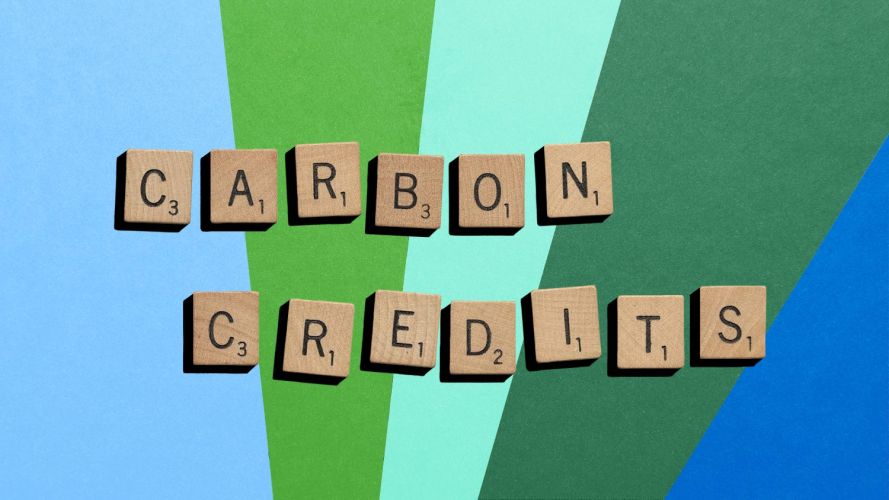Why Carbon Credits Are a Great Addition to Your Climate Action Plan

If you’re looking for guidance on how your organization can contribute to the global goal of net zero emissions, learning about the role of carbon credits and carbon markets is an important step.
Organizations’ use of carbon credits as part of their climate action strategies has sparked both excitement and concern globally.
Carbon credits — which represent the avoidance, reduction, or removal of greenhouse gasses in order to compensate for emissions made elsewhere — can play an important role in our collective journey to a more sustainable and nature-positive future. Carbon credits can be a key part of our efforts to reach the shared global goal of net zero. This is when the amount of greenhouse gasses emitted into the atmosphere equals those removed from it.
But not all carbon credits are equally helpful. If made poorly or used improperly, they can be harmful.
Join us on the journey to net zero
Our latest white paper details the role of carbon credits in Salesforce’s path to net zero. Learn more about how you can help contribute to a nature-positive world.



Determining how carbon credits fit into organizations’ climate action journeys is a high priority worldwide. We are in the midst of confronting the biggest challenge humanity has ever faced: the climate crisis. Rising sea levels, heatwaves, droughts, and increasingly powerful storms are causing devastation around the globe.
On a global scale, our first step must be to greatly reduce greenhouse gas emissions. We need to cut emissions in half by 2030 and to near zero by 2050. That sounds hard, and it will be — but the good news is many organizations are already stepping up. At Salesforce, we’ve shared our Climate Action Plan, and we hope it serves as a resource for others.
However, reducing emissions will take time, and doing that alone may not be enough. Organizations should use all the tools they have to work toward the global goal of net zero. One step organizations can take is to purchase carbon credits to help compensate for the emissions they haven’t yet reduced, and help scale climate solutions beyond their value chain.
Carbon markets and the carbon credit lifecycle
The carbon credit lifecycle begins when an ecopreneur — an environmentally-minded entrepreneur — creates a carbon project, such as reforesting degraded farm land. The climate benefits of the carbon project are then reviewed and validated under a credible carbon standard.
Once the project’s climate benefits are verified by an independent third party, carbon credits are issued. The ecopreneur can then sell the credits to anyone, including organizations, by using carbon markets.
Are your carbon credits contributing to climate action?
Reducing emissions throughout its full value chain should be an organization’s first priority when taking climate action. Setting an emissions reduction target grounded in climate science and making a plan to achieve it is the best way to get started.
With Salesforce’s Net Zero Cloud, organizations can easily track, analyze, and report on carbon emissions and waste management data across their business ecosystem, including suppliers.
The longer the world waits to start reducing emissions, the steeper our reduction curve will have to be in order to achieve the GHG levels that science tells us are necessary to avoid the worst impacts of climate change.
We’re at an “all of the above” moment for climate action. We need all strategies, executed in parallel, right now. So while you’re working on reducing emissions, you can also purchase carbon credits to provide critical funding to scale climate solutions and compensate for the emissions you cannot yet reduce.
Grow with sustainability
Want a 360-degree view of your environmental efforts? With Salesforce’s Net Zero Cloud, you can reduce costs and emissions and make sustainability part of every decision.



Evaluating carbon credit criticisms
Today, there are two main criticisms of carbon credits:
- Organizations will purchase carbon credits instead of reducing their emissions
- The climate benefits that credits from projects claim are inflated or simply incorrect
Organizations must address the first critique by purchasing carbon credits as part of a larger, comprehensive climate action strategy. That strategy begins with emissions reductions as its first priority, with a clear plan to reduce as far and fast as possible. Clarity in how your organization plans to use carbon credits as part of its climate action strategy is critical.
Next, by examining third-party ratings and other independent evaluations, organizations can understand the impacts of their carbon credit purchases and ensure that they meet or exceed quality standards.
Doing this can help buyers feel confident that the credits they pay for have the intended GHG impact. This can help ensure that the specific co-benefits that matter to them — such as biodiversity and supporting the local economy — are also satisfied.
The challenges organizations face working toward net zero
Taking bold climate action is not always easy. It takes determination, resources, and innovation. But taking action can make organizations more successful and resilient.
We’ve learned a lot since we made our first net zero commitment in 2015. Since then, we’ve operationalized emissions reduction across the company and developed our own internal quality criteria to guide our carbon credit purchases.
In our journey, we realized the voluntary carbon market faces a few key challenges, including:
Challenge 1: Buying carbon credits — and understanding their level of quality — is hard, and it shouldn’t be
Many organizations are working hard to buy high-quality carbon credits. But this means navigating the rapidly-evolving voluntary carbon market, which can be very challenging. The global voluntary carbon market is estimated to grow to $50 billion by 2030, yet many organizations may not know how to build a carbon credit portfolio — or even where to start. The path to purchasing carbon credits can also be complex, and buyers want to trust that the carbon credit projects they select have a positive impact.
Challenge 2: We need more high-quality carbon credit projects
Many of the projects offered in the voluntary carbon market today do not meet the requirements proposed in the draft Core Carbon Principles by the ICVCM. While these principles may be ambitious, they set an important standard for quality. We need more ecopreneurs, creating more carbon credit projects, with greater quality and transparency than ever before.
It’s time for an ecopreneur revolution
At Salesforce, we’re on a mission to start an ecopreneur revolution that drives meaningful climate action and scalable impact.
There are a few ways we do this, including bringing together leaders in the voluntary carbon market, helping ecopreneurs to connect and secure funding for their ideas, discovering and investing in ecopreneurs, and raising awareness to promote the work of ecopreneurs.
“We’re committed to an ecopreneur revolution — energizing incredible young entrepreneurs dedicated to the environment,” said Marc Benioff, Salesforce’s chair and co-CEO.
So, what’s next?
As voluntary carbon markets continue to rapidly evolve, here’s how organizations can get involved:
- Implement a climate action strategy that involves deep emissions reductions and purchase high-quality carbon credits to compensate for any emissions that remain.
- Get involved with groups like the Business Alliance for Scaling Climate Solutions that are working to scale and improve climate solutions funding, including carbon credits.
- If possible, show your long-term dedication to net zero by making advance market commitments for carbon credits. Investing in the future can be the one critical action that allows a carbon credit project to be built.
In the coming years, Salesforce will continue to invest in carbon removal technologies and nature-based solutions via carbon markets.
Carbon markets are complex. Inevitably, some mistakes will be made along the way. But the worst thing to do is sit on the sidelines and wait. We’re in this together, and we must work together to create a future we can be proud of — starting now.
Take climate action
We believe business is the greatest platform for change. Learn more about ESG & Impact at Salesforce.

































